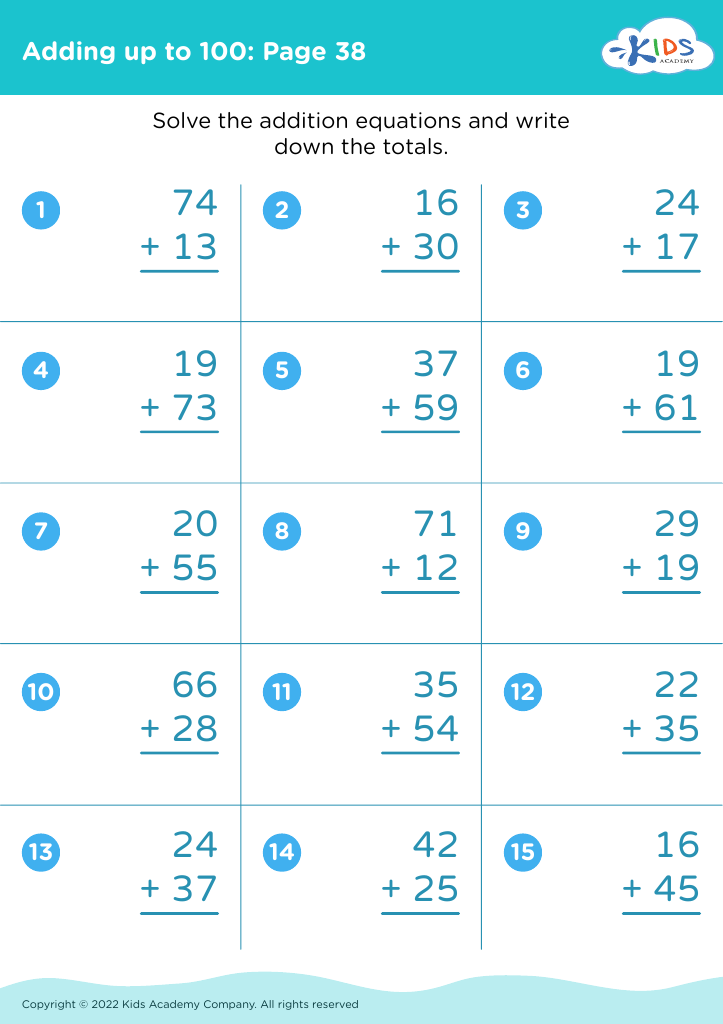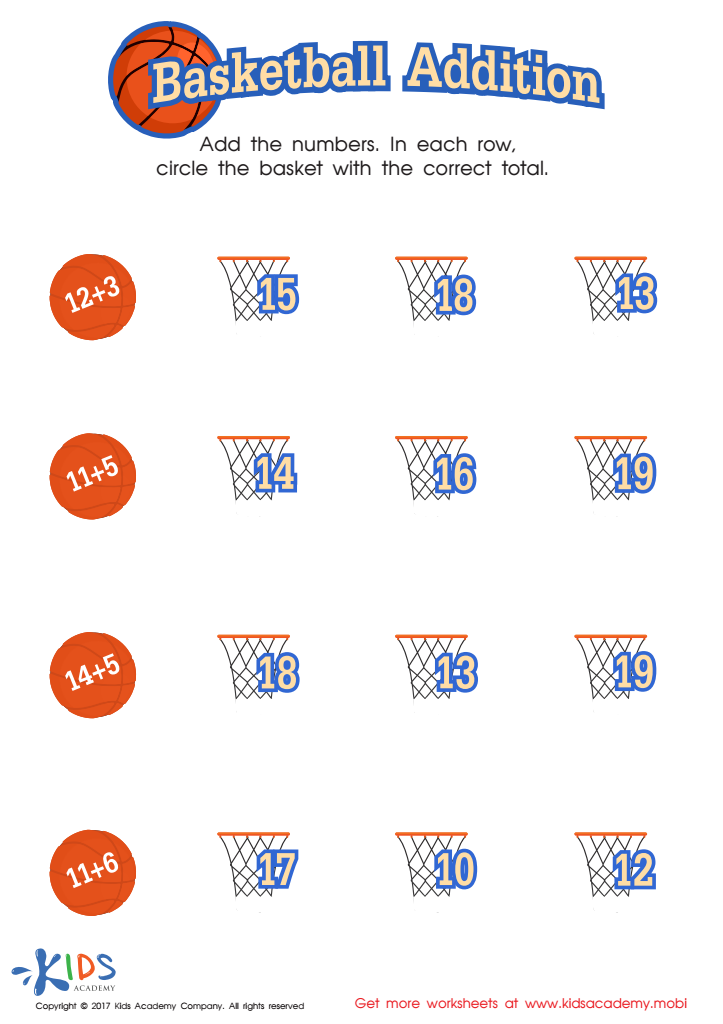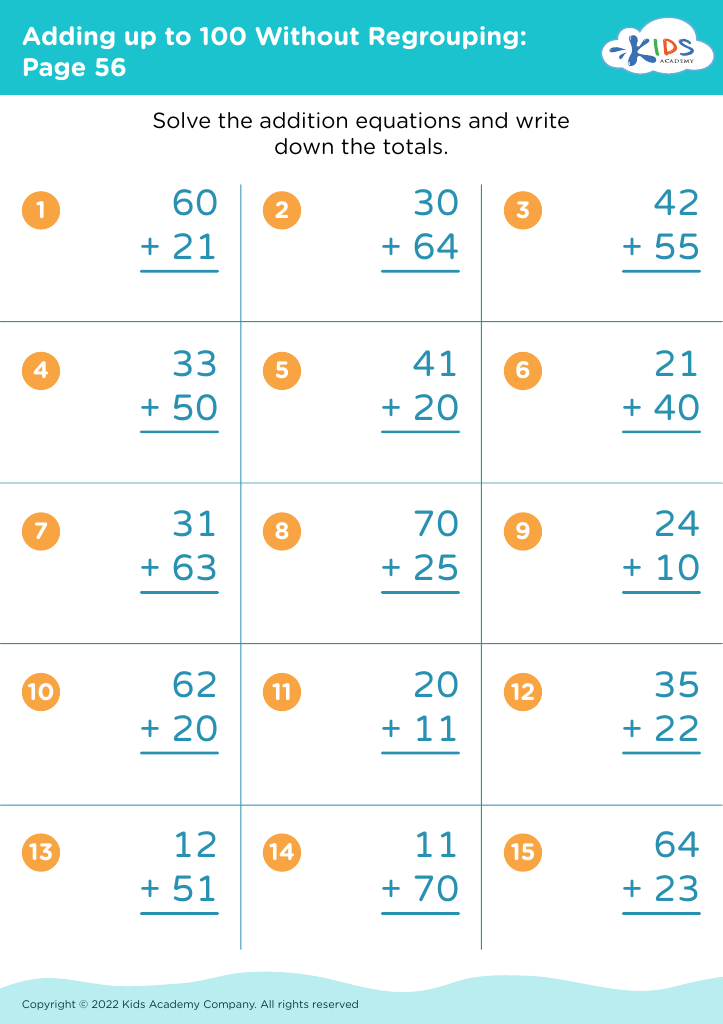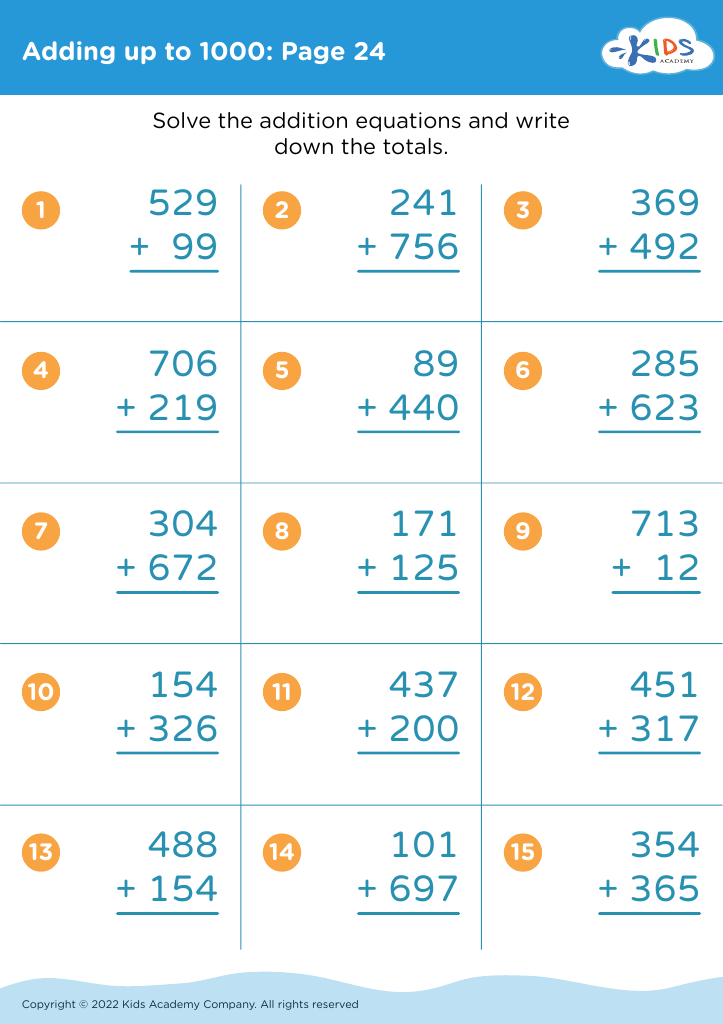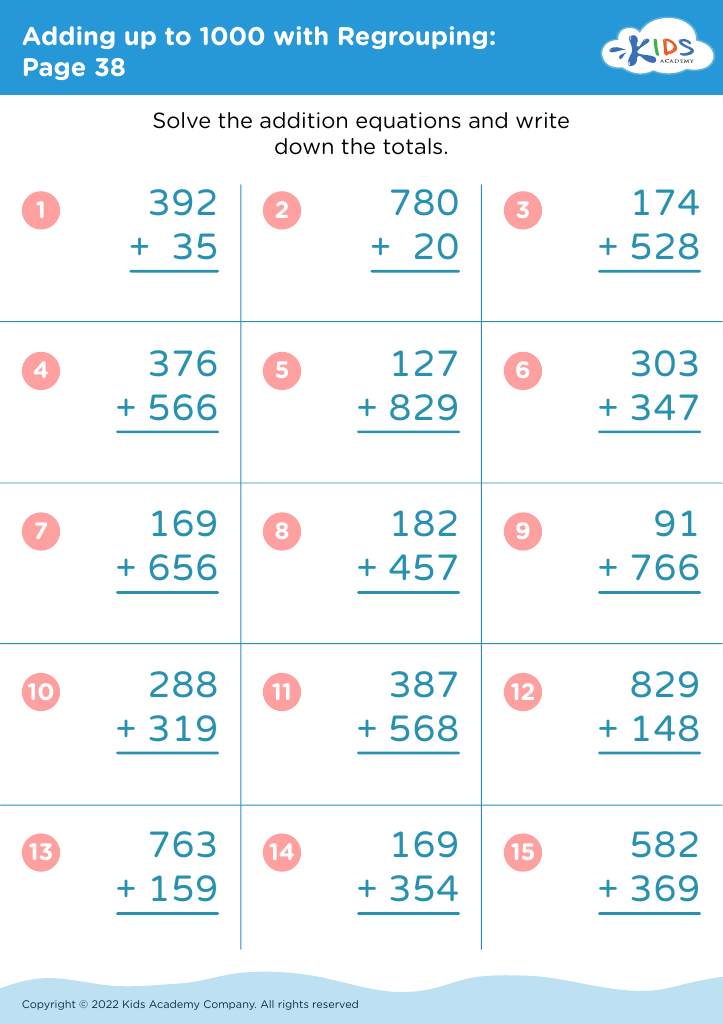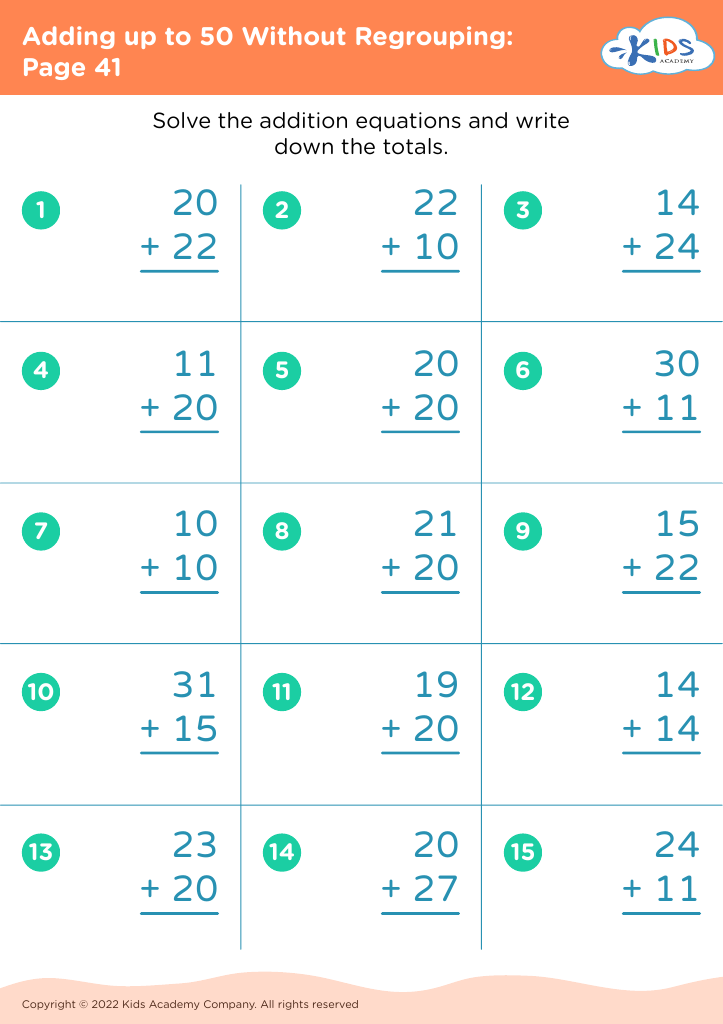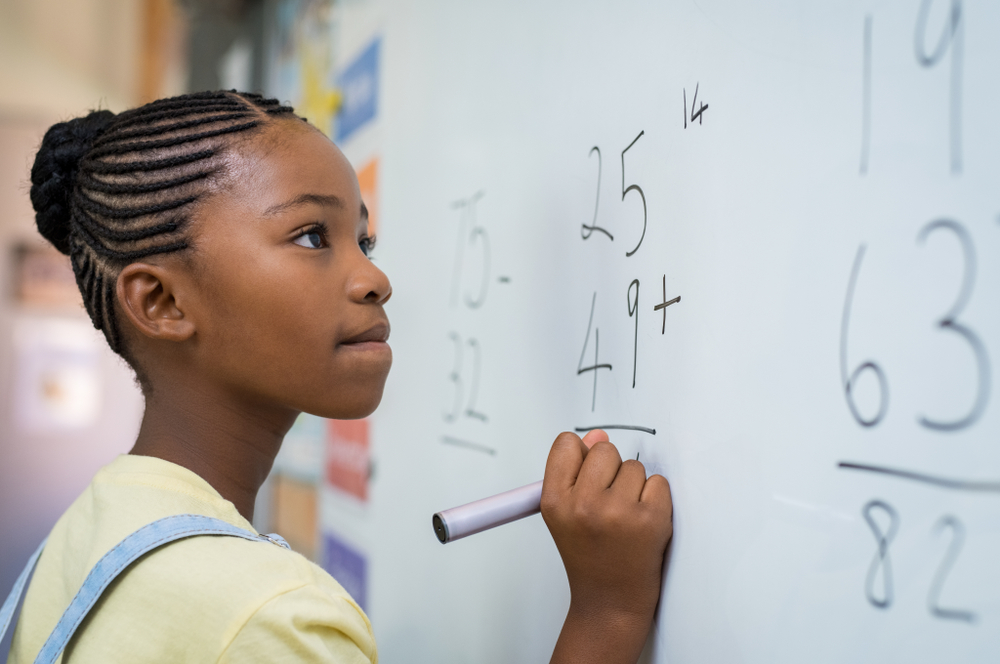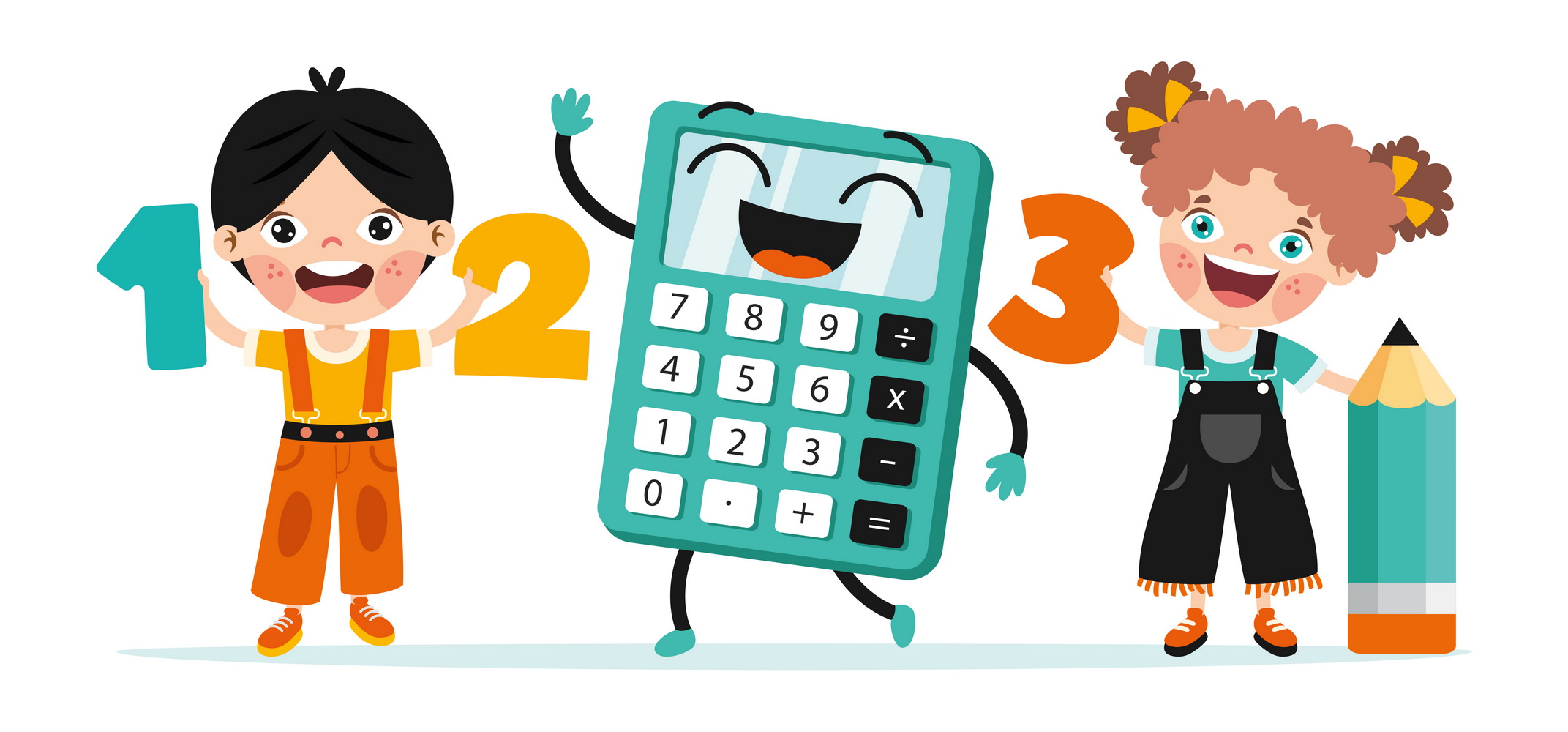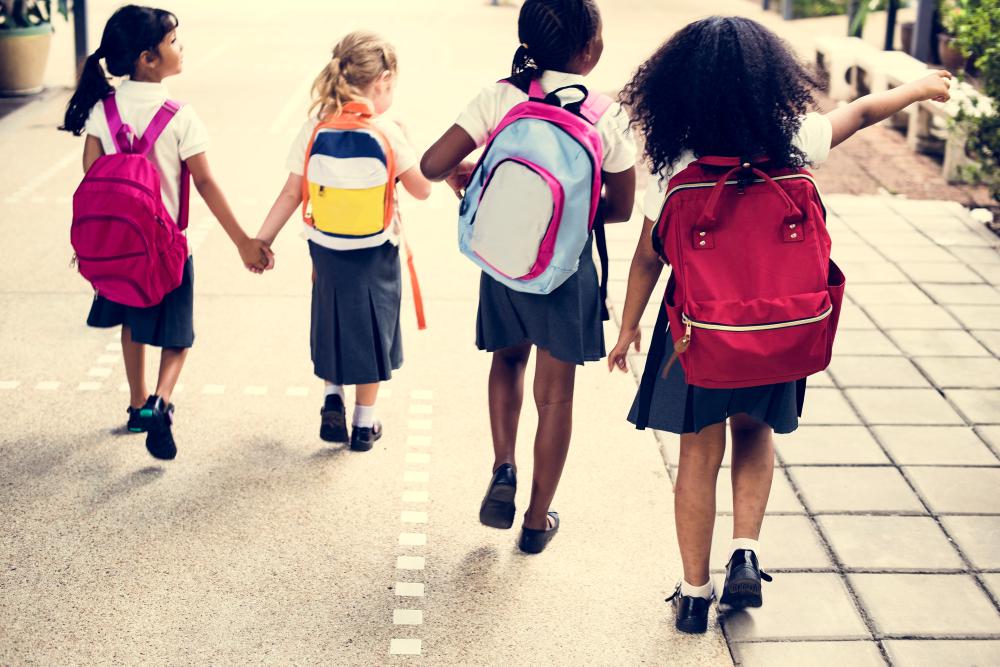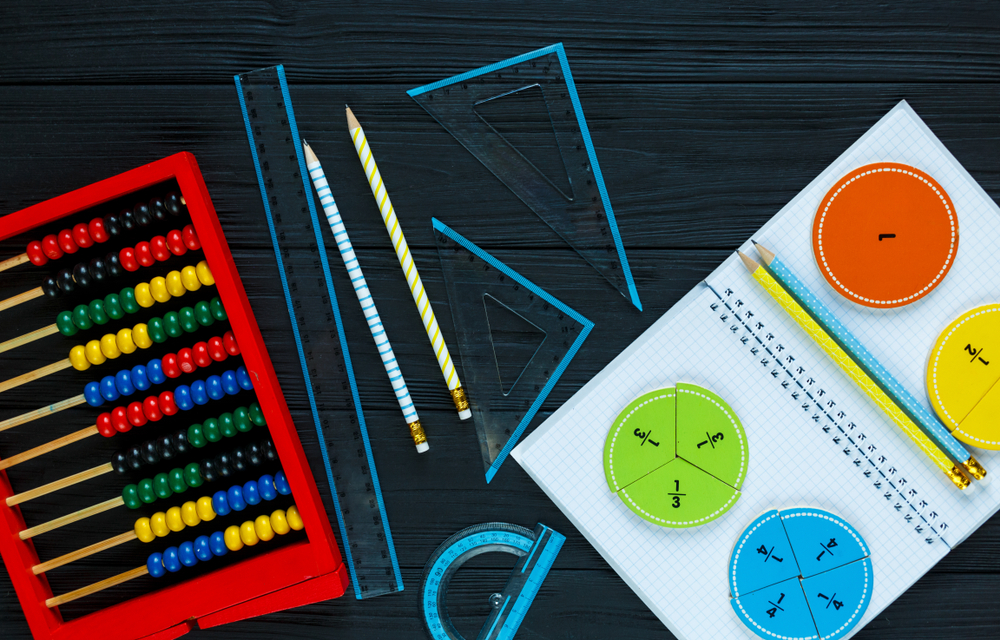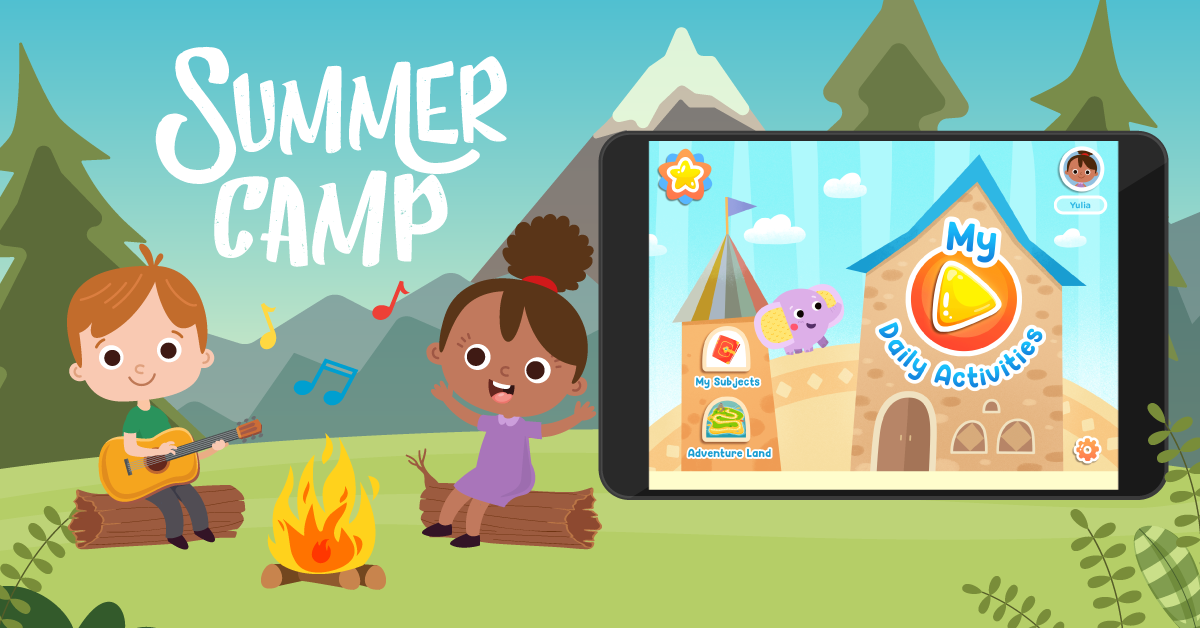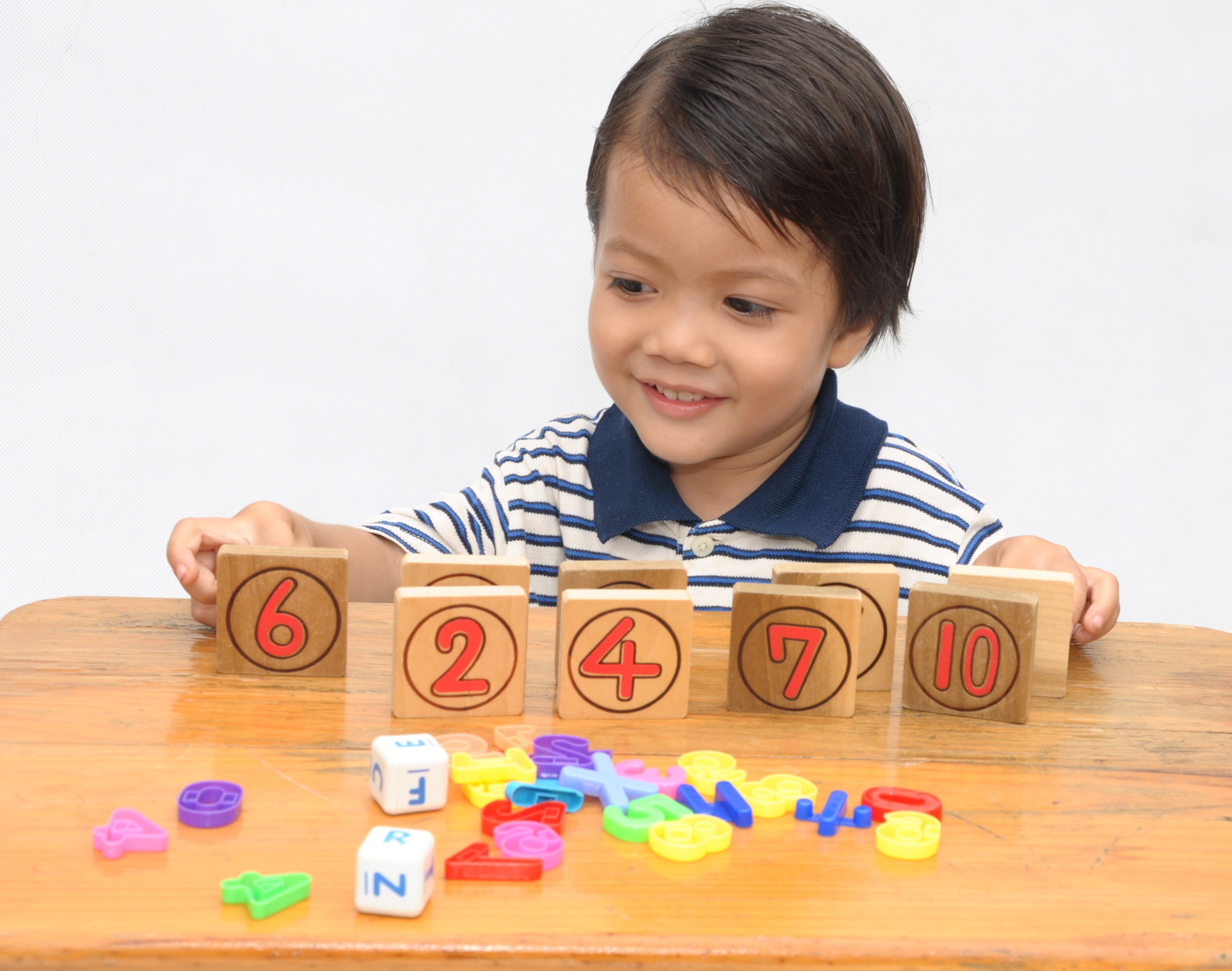Hand-eye Coordination Addition & Subtraction Worksheets for Ages 6-8
14 filtered results
-
From - To
Boost your child's cognitive and motor skills with our Hand-eye Coordination Addition & Subtraction Worksheets for Ages 6-8. Designed to enhance numeracy and fine motor abilities, these engaging activities enable young learners to practice adding and subtracting while improving hand-eye coordination. Each worksheet features fun, interactive exercises that keep kids motivated and confident in their math skills. Perfect for both classroom use and at-home practice, these educational tools create a solid foundation for future learning success. Encourage your 6 to 8-year-old's mathematical journey with our expertly crafted worksheets, and watch their skills flourish!
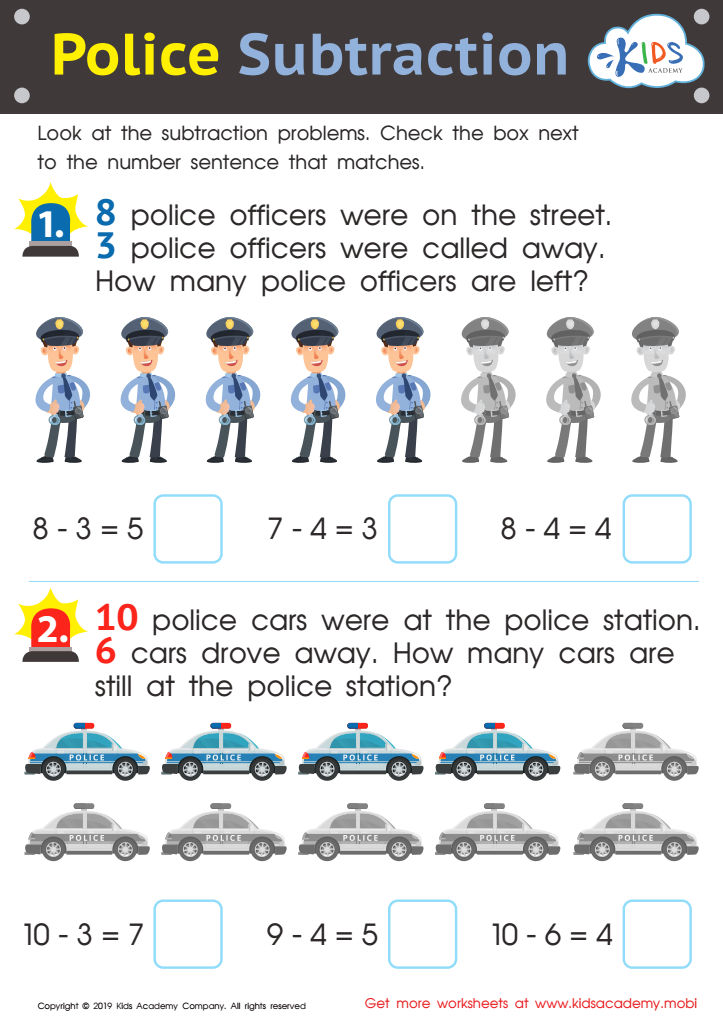

Police Subtraction Worksheet
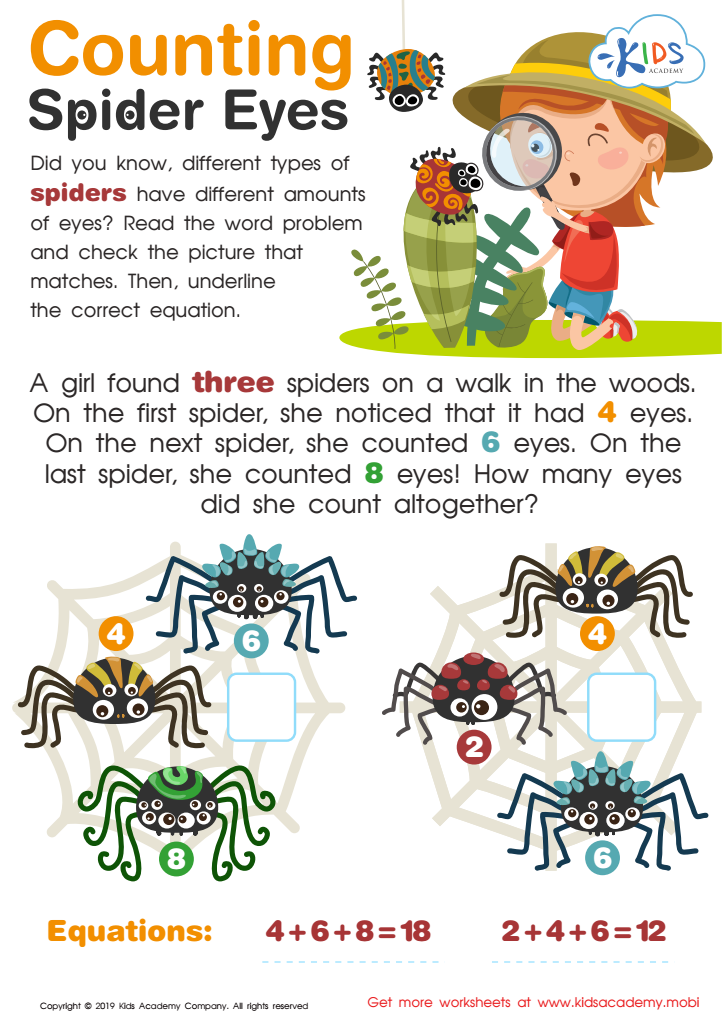

Counting Spider Eyes Worksheet
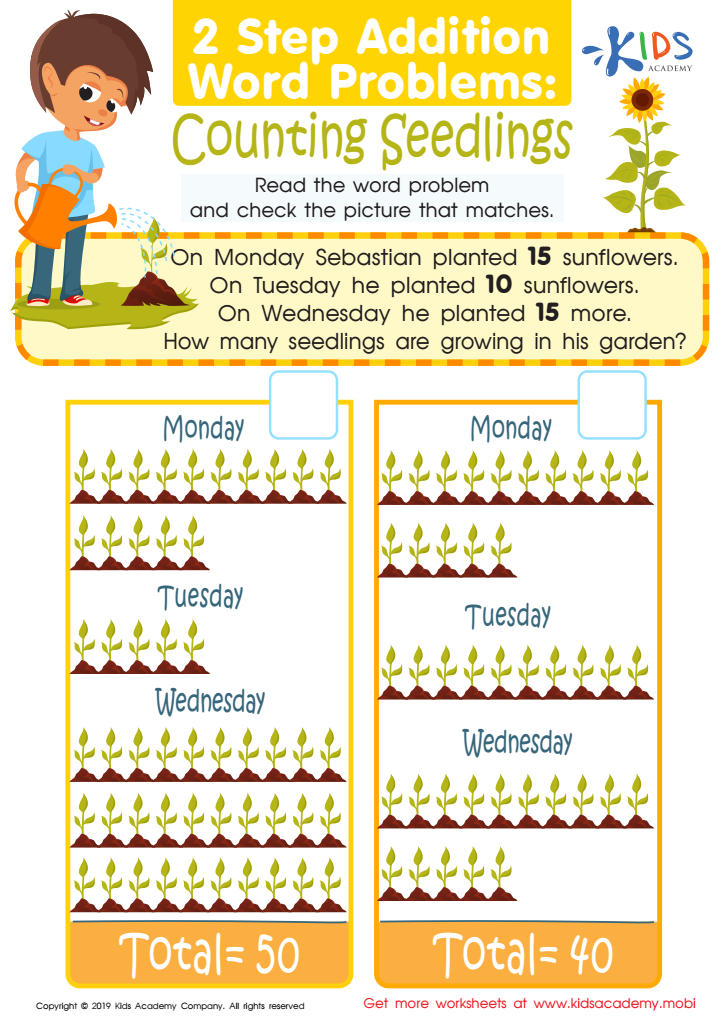

Counting Seedlings Worksheet
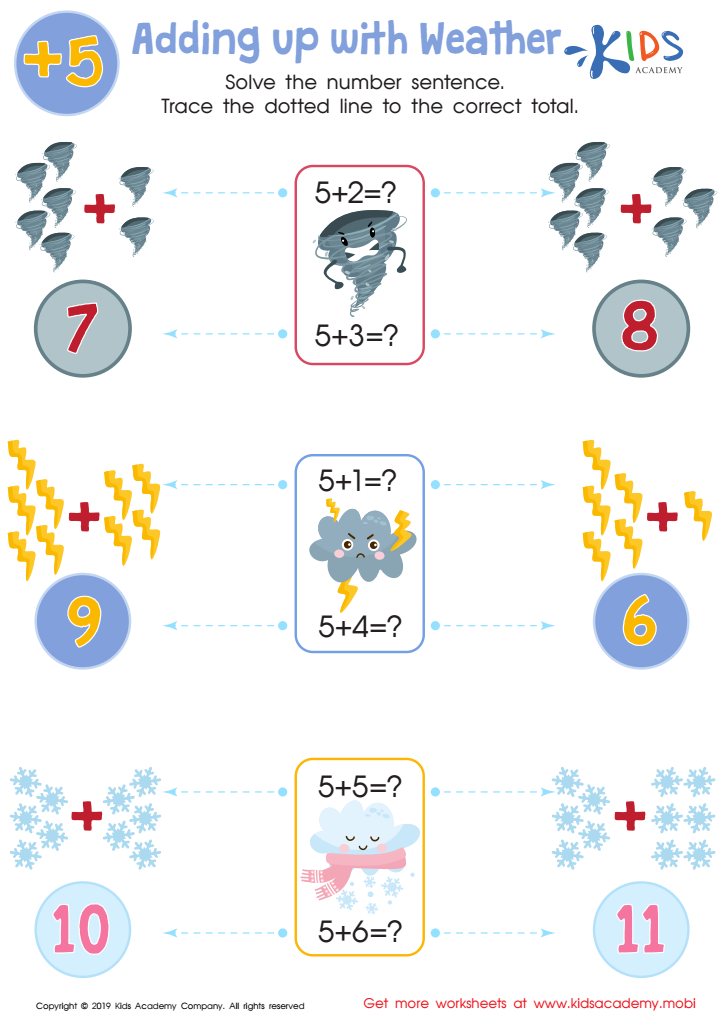

Adding up With Water Worksheet
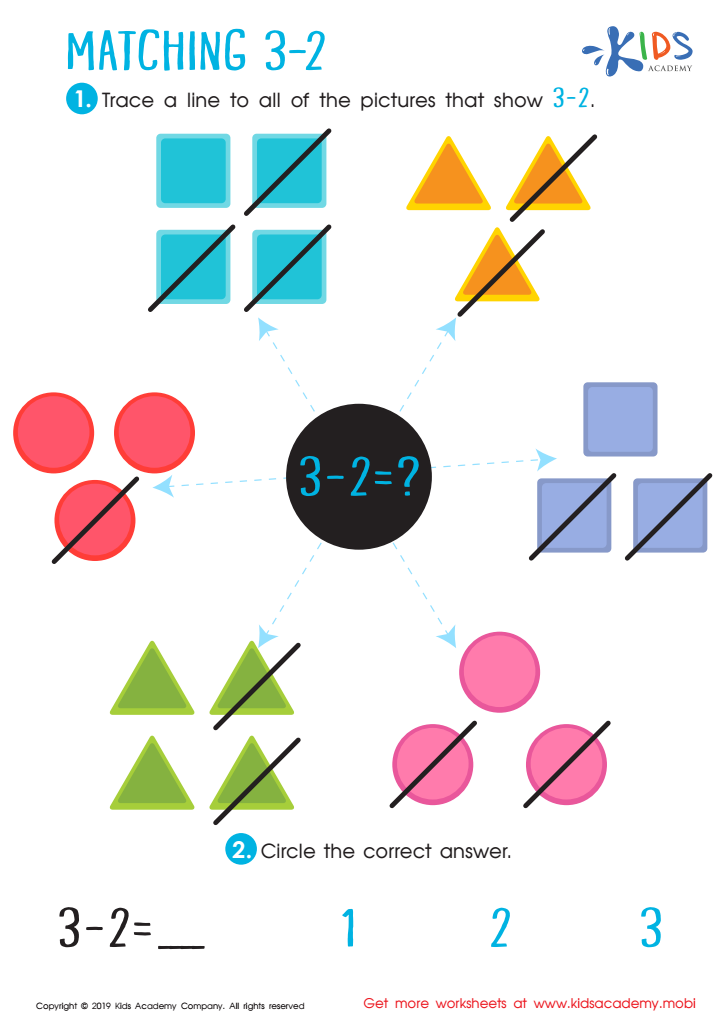

Matching 3-2 Worksheet
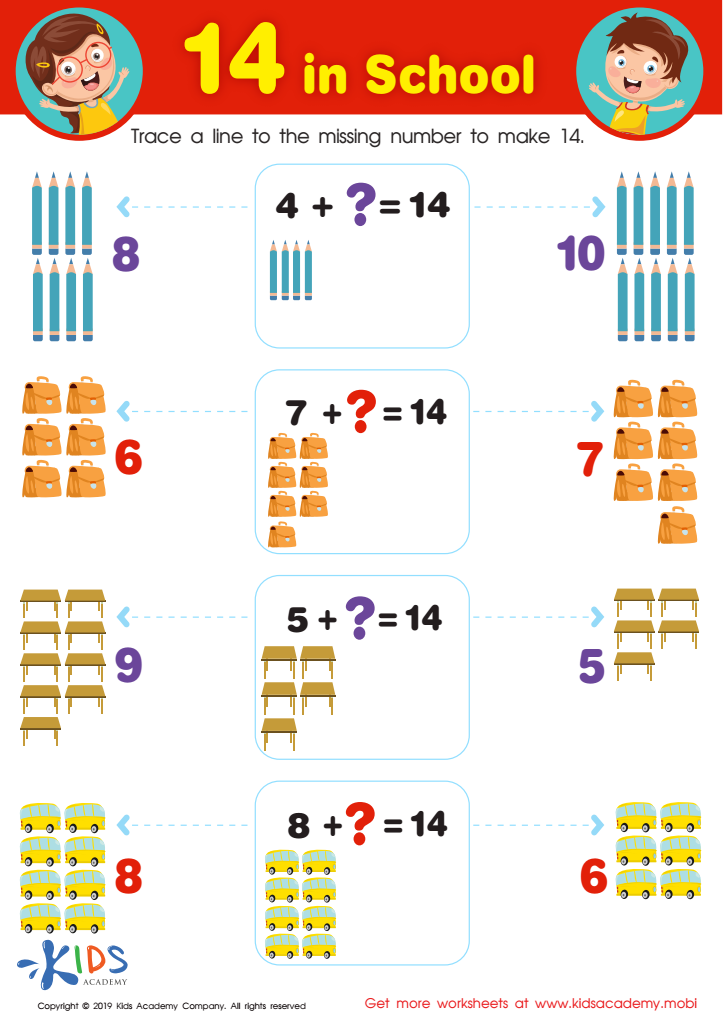

14 in School Worksheet
Parents and teachers should pay attention to Hand-eye Coordination Addition & Subtraction for ages 6-8 because it is crucial for both cognitive development and physical dexterity. At this age, children are solidifying foundational math skills like addition and subtraction, which are essential for more complex problem-solving later. Integrating these mathematical operations with hand-eye coordination activities engages multiple brain regions, fostering holistic development.
This combination helps children not just understand numbers abstractly but also apply them in practical, physical ways, reinforcing their learning through different sensory inputs. For instance, using manipulatives like beads or blocks to solve addition and subtraction problems encourages children to visualize numbers and directly manipulate objects, bridging the gap between concrete and abstract thinking.
Moreover, good hand-eye coordination is fundamental for everyday tasks such as writing, tying shoelaces, or playing sports. By enhancing this through integrated arithmetic activities, children can improve both their academic abilities and motor skills simultaneously.
In summary, fostering hand-eye coordination alongside addition and subtraction skills promotes a well-rounded development. It bolsters cognitive functions, enhances academic performance, and equips children with practical life skills, laying a robust foundation for future learning and physical activities.
 Assign to My Students
Assign to My Students
